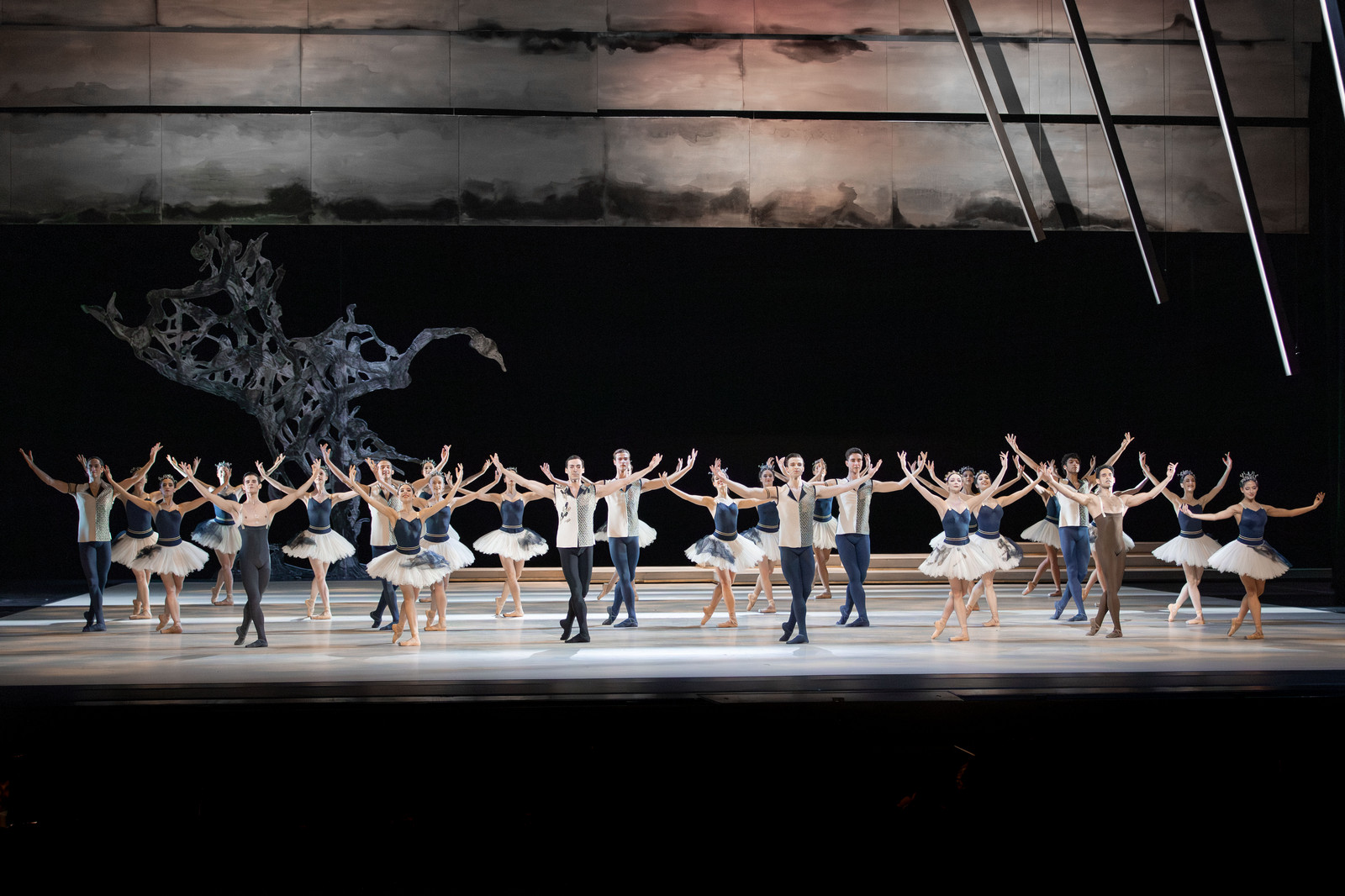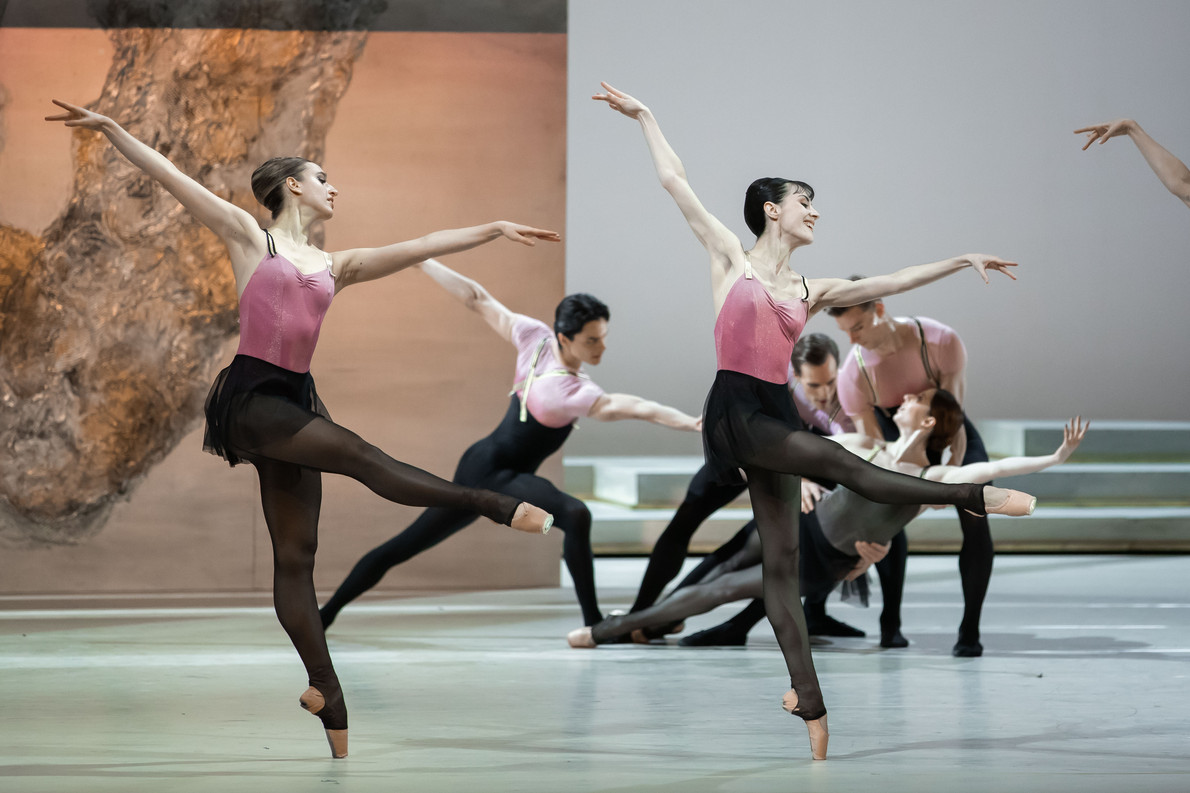
TCHAIKOVSKY OVERTURES - BALLET BY ALEXEI RATMANSKY
Choreography: Alexei Ratmansky
Music: Pyotr I. Tchaikovsky
Stage and costumes: Jean-Marc Puissant
Lighting: James F. Ingalls
Dramaturgy: Serge Honegger
Musical direction: Mikhail Agrest
Bayerisches Staatsballett
Bayerisches Staatsorchester
World premiere: Bayerisches Staatsballett, Nationaltheater Munich, 23 December 2022
Photos: © Bayerisches Staatsballett / Katja Lotter
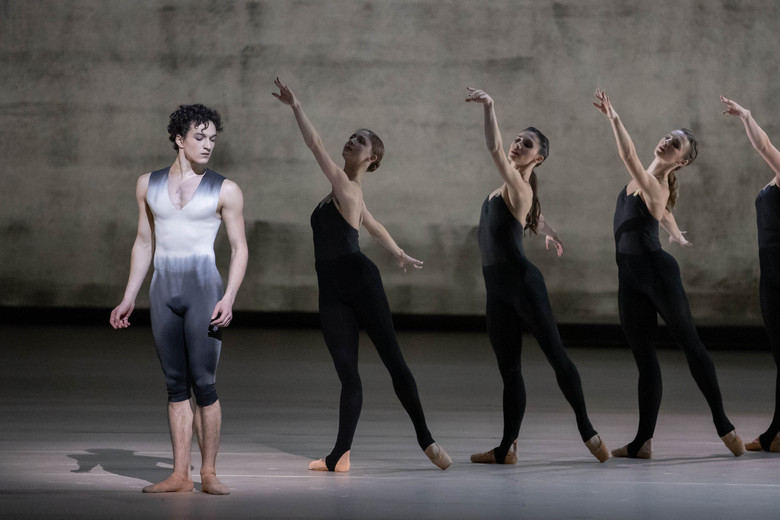
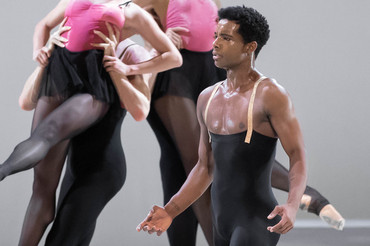
EXCERPT FROM AN INTERVIEW WITH ALEXEI RATMANSKY FOR THE PROGRAMME BOOKLET
SH: What kind of stage situations did you aim for in the choreography?
AR: We opted for a certain versatility and mobility of the elements because I like to play with empty spaces and see where they take me. We don't use symbols that are too clear or too literal. Of course I also like stories and plots in ballet, but now I felt I needed a bit more freedom. You don't want to discover something and get stuck in an immovable structure.
SH: A choreography like the one you've now developed in the studio reflects also the situation outside the theatre ...
AR: For over six months now, we have been experiencing a fundamental change in our world with the Russian war of aggression in Ukraine. When we started planning and had our first talks, none of this violence and destruction was foreseeable. Politics and art. It's all connected. I don't see this war as just politics. It's much more than that. It's about questioning our beliefs and how we see ourselves as individuals and as a society. This conflict is about all of us.
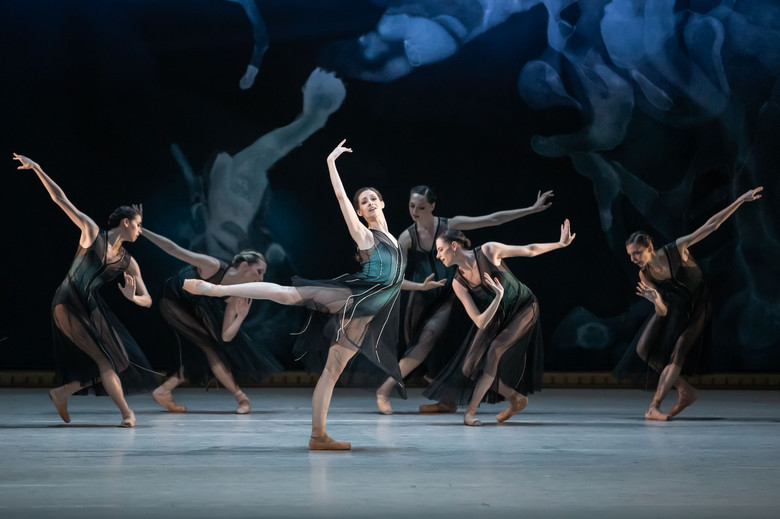
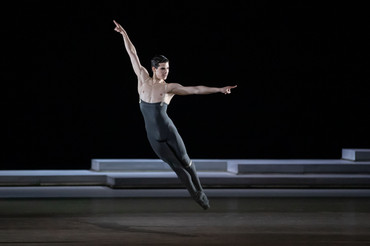
MAKING A START: EXTRACT FROM THE PROGRAMME BOOKLET
For his ballet "Tchaikovsky Overtures", Alexei Ratmansky has chosen a musical form that traditionally emphasises the beginning. The choreography inscribes itself as a setting first and foremost in the realisation by the dancers involved in an empty space, before the ballet takes on its final form on stage through further creative elements.
By choosing Pyotr I. Tchaikovsky's overtures and the form of the abstract ballet, which only presents fragments of actions, Alexei Ratmansky weaves the motifs of the beginning, the unfinished and the open to the future into the overall structure of his ballet. Against this background, the choreography represents an invitation to the audience not to fixate on one statement. Rather, the choreographic sequences, the changes on stage, in the lighting and in the costume design as well as the musical composition offer the opportunity to participate in the experience of the phenomenon of beginnings.
